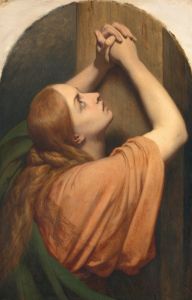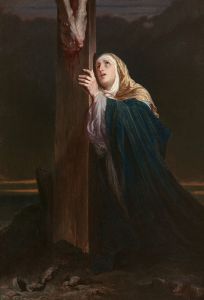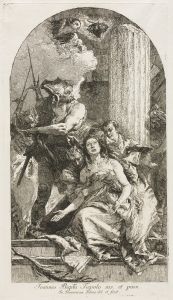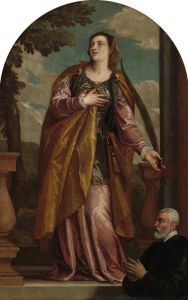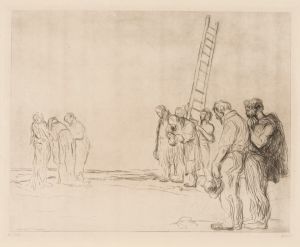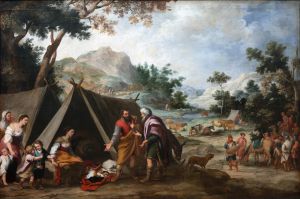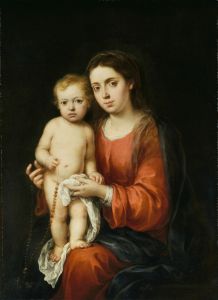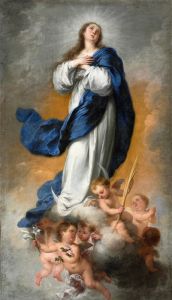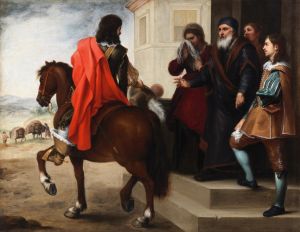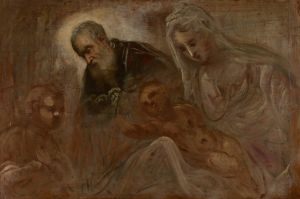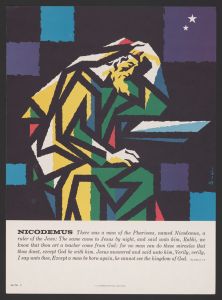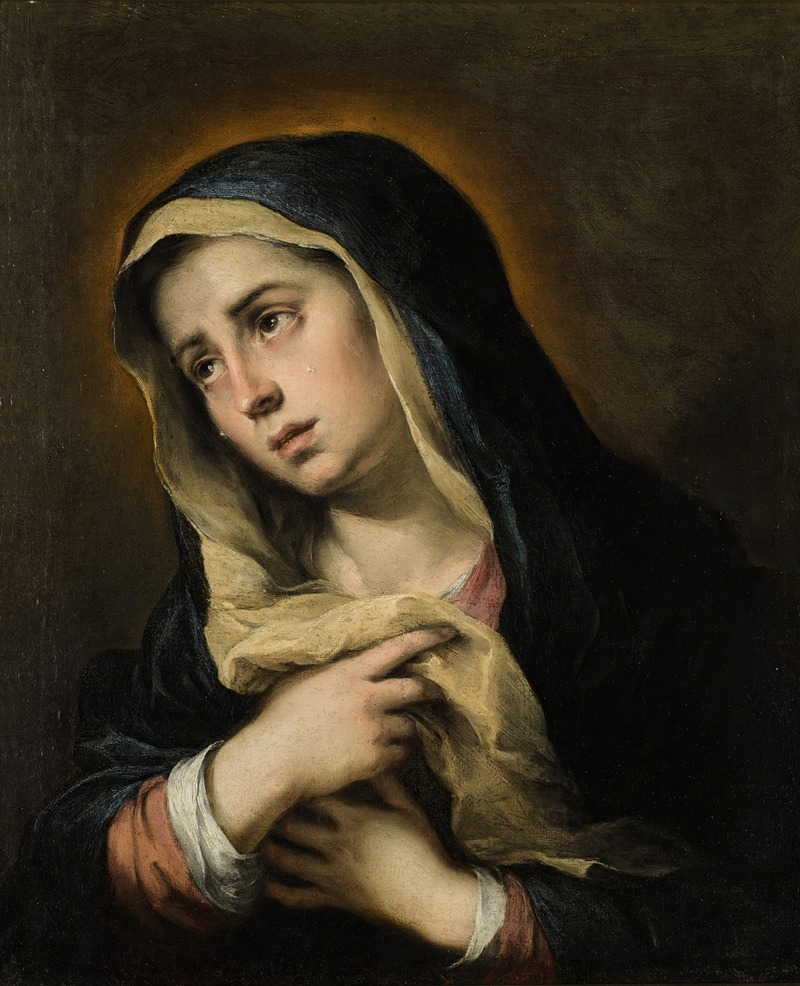
Mater Dolorosa
A hand-painted replica of Bartolomé Estebán Murillo’s masterpiece Mater Dolorosa, meticulously crafted by professional artists to capture the true essence of the original. Each piece is created with museum-quality canvas and rare mineral pigments, carefully painted by experienced artists with delicate brushstrokes and rich, layered colors to perfectly recreate the texture of the original artwork. Unlike machine-printed reproductions, this hand-painted version brings the painting to life, infused with the artist’s emotions and skill in every stroke. Whether for personal collection or home decoration, it instantly elevates the artistic atmosphere of any space.
Bartolomé Esteban Murillo, a prominent Spanish Baroque painter, is renowned for his religious works, among which "Mater Dolorosa" stands out as a significant piece. Murillo was born in 1617 in Seville, Spain, and became one of the most important painters of his time, known for his ability to convey emotion and spirituality through his art. "Mater Dolorosa," which translates to "Mother of Sorrows," is a depiction of the Virgin Mary in a state of mourning, reflecting on the suffering and death of her son, Jesus Christ.
This painting is a quintessential example of Murillo's skill in capturing the human emotion and divine grace of religious figures. The "Mater Dolorosa" is characterized by its tender portrayal of the Virgin Mary, who is often depicted with a sorrowful expression, her eyes cast downwards or gazing heavenward, embodying both her grief and her acceptance of divine will. Murillo's use of soft, luminous colors and delicate brushwork enhances the emotional depth of the piece, drawing the viewer into the intimate and poignant moment of Mary's sorrow.
Murillo's "Mater Dolorosa" is notable for its composition and the artist's ability to convey a sense of serenity amidst sorrow. The Virgin Mary is typically shown with her hands clasped in prayer or gently folded, a gesture that signifies her piety and resignation. Her attire is often simple, yet elegant, with a blue mantle symbolizing her purity and a red tunic representing her suffering and love. The background is usually kept minimalistic, focusing the viewer's attention on Mary's expression and the emotional weight of the scene.
The painting reflects Murillo's mastery of chiaroscuro, the use of strong contrasts between light and dark to achieve a sense of volume and three-dimensionality. This technique not only highlights the delicate features of the Virgin Mary but also creates a halo-like effect around her, emphasizing her sanctity and divine role as the Mother of God. Murillo's ability to blend realism with idealism allows the viewer to connect with the spiritual and emotional aspects of the painting on a personal level.
"Mater Dolorosa" is part of a broader tradition of Marian art in the Catholic Church, where the Virgin Mary is venerated as a symbol of compassion and intercession. Murillo's interpretation of this theme is particularly revered for its warmth and accessibility, qualities that made his works popular during his lifetime and continue to resonate with audiences today.
Murillo's influence extended beyond his native Spain, impacting artists across Europe and the Americas. His works, including "Mater Dolorosa," are housed in various museums and collections worldwide, where they continue to be studied and admired for their artistic and spiritual significance. The painting exemplifies Murillo's contribution to the Baroque movement, characterized by its emphasis on emotion, movement, and dramatic use of light and shadow.
In summary, Bartolomé Esteban Murillo's "Mater Dolorosa" is a masterful representation of the Virgin Mary in her role as the Mother of Sorrows. Through his expert use of color, light, and composition, Murillo captures the profound emotional and spiritual dimensions of this iconic religious figure, making the painting a timeless piece of art that continues to inspire and move viewers centuries after its creation.





